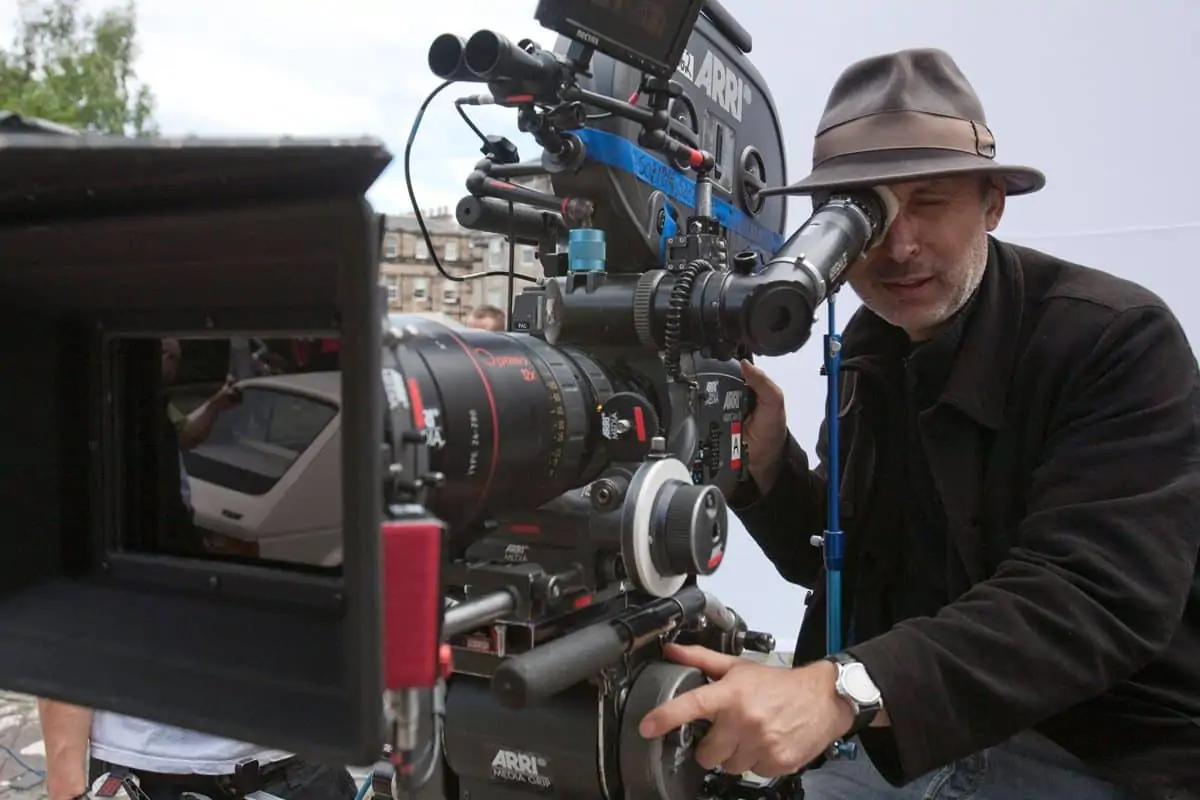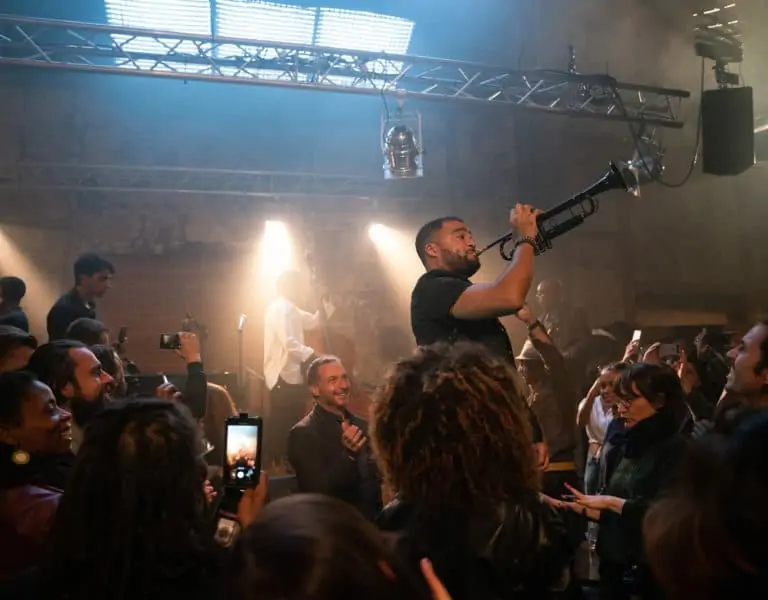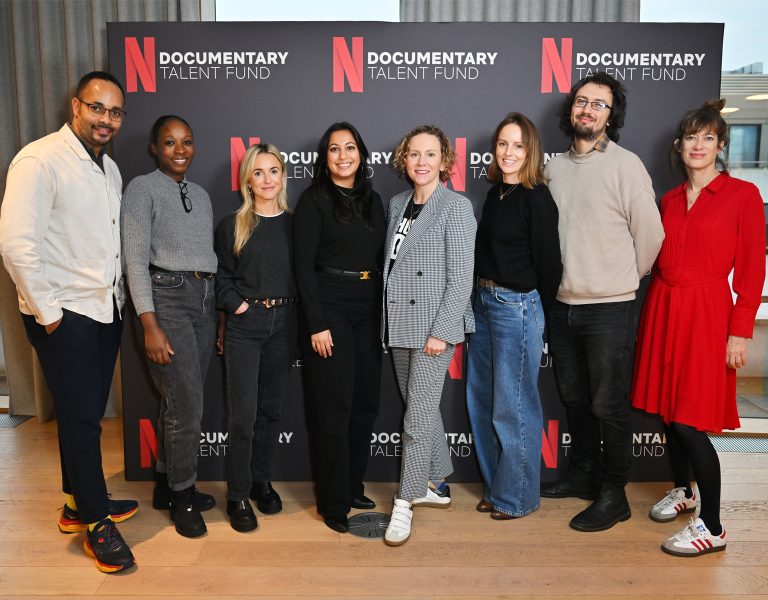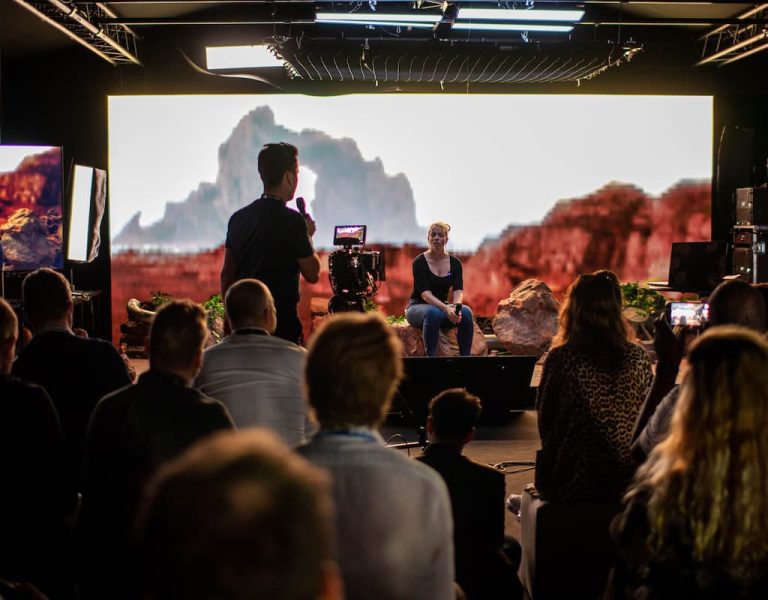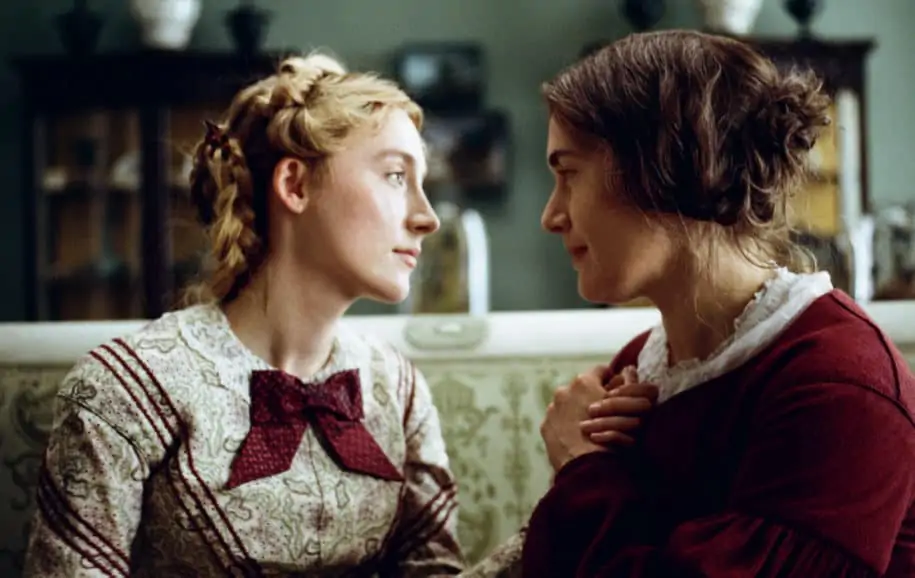
The love affair between two women transcends the boundaries of class and prejudice in director Francis Lee’s follow up to the acclaimed romantic drama God’s Own Country. The based-on-fact relationship between amateur fossil hunter Mary Anning (Kate Winslet) and rich, young bride Charlotte Murchison (Saoirse Ronan) in 1840s England is written by Lee as a passionate paean expressing loneliness.
Lee chose cinematographer Stéphane Fontaine, AFC (A Prophet, Jackie) to capture the visuals. Together, they portray the clash of social spheres and personalities in the wild and brutal Southern English coastline.
“In a way, the storytelling and style mirrors God’s Own Country in that we have two main characters who are not very talkative to say the least,” says Fontaine. “In Ammonite, Francis was particularly interested in the faces because the lack of dialogue means the emotions expressed on faces is even more important.
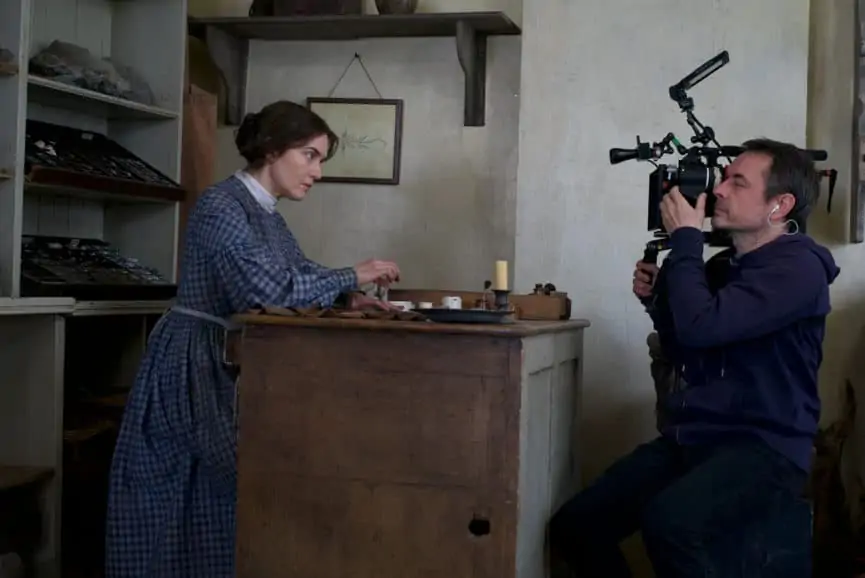
Another key element for Lee was the ability to shoot long takes. In that regard, shooting long handheld shots made a big difference if the camera housing the large sensor was more compact than a bulkier 35mm camera.
He continues, “I first picked RED on Rust and Bone (2012). Since then I’ve shot with DRAGON and HELIUM, but the MONSTRO is such a big leap forward in terms of look, color science and ISO. It sees in the dark a lot better than any other RED before.”
The DP has shot several commercials on MONSTRO, including the 2019 feature My Zoe, directed by Julie Delpy. For Ammonite, he paired the camera with Canon K-35 primes, covering full frame and ranging T1.3-1.5 (18mm, 24mm, 35mm, 55mm, 85mm). Engineered in the mid-1980s, the lenses yield vintage-style color rendition and skin tones. “The lenses take a bit of the edge off the sharpness of the digital image,” says Fontaine.
“Another great thing with RED is the ability to change resolution depending on the shot,” he adds. “For instance, I may use a 55mm for a shot in 8K and just walk in a bit and punch in a little more in 7K. Sometimes we even shot 6K. It’s interesting because that means the same lens has very different personalities depending on the resolution you choose.
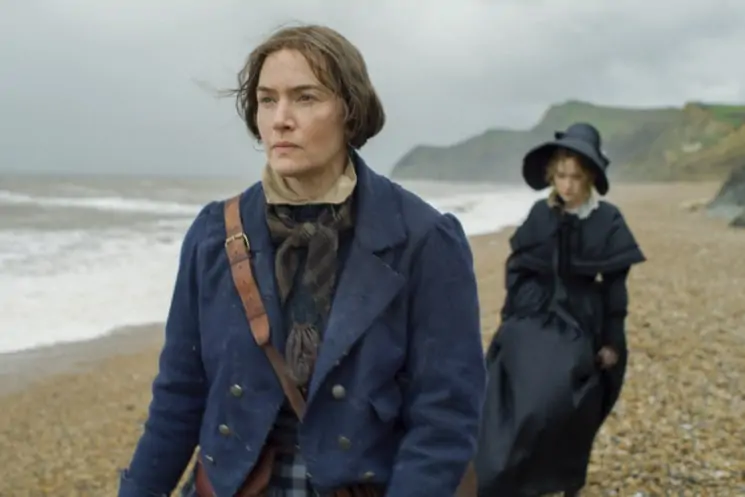
“He was also interested in showing the hands,” he continues. “As a self-taught paleontologist, Mary works with her hands. Francis was keen on seeing that and concentrating on all the tiny details of body language and physical expression.”
In the mid-19th century, gestures, costume, accent and mannerisms were a coded means of communication for both sexes. Understanding this is key to the filmmaker’s low-key, solemn approach to storytelling.
“For example, we understand Mary and Charlotte’s character partly in relation to how Charlotte’s husband Roderick (James McArdle) behaves to women,” Fontaine explains. “There are layers to this. Socially, he is bourgeois and both Mary and Charlotte are working class. He is from London and there’s a big difference in this society of being from London and the more isolated and poorer seaside. Thirdly, he is man, so he knows better, he introduces himself to Mary as an educated man. He is slightly condescending to women. This is the complex stage on which the story is going to develop.”
The cinematographer adds, “This means our camera is not ostentatious. It is quite observational. We’re not telling the audience what to think or what they have to feel.”
Fontaine has worked with RED on several projects, beginning with Rust and Bone on EPIC in 2012. His tool of choice for Ammonite was a RED DSMC2 brain with the MONSTRO 8K VV sensor.
“My approach in the look of the movie was more a photographic than a cinematic one,” he says. “If we wanted to focus on facial features and hands, it felt appropriate to have a big sensor, as if shooting medium format photography.”
“It’s a bit quieter when you’re in 8K and punchier when you shoot 7K,” Fontaine continues. “So, with one lens you obtain two different feels. I used the technique in a lot of scenes. Very often the wide is shot in 8K, unless I wanted to have slightly long lens look for which I’d shoot 7K.”
Ammonite was shot on location in Lyme Regis, a small seaside town on England’s south coast where Anning lived and worked on the nearby cliffs. Lee and Fontaine shot over the winter of 2018 through 2019 using largely natural light.
“One thing we didn’t want to have was sun,” reports Fontaine. “We were blessed because that winter was quite gloomy. We’d discussed whether we wanted a style that looked natural or one more cinematic that would feel like film lighting. We decided that if wanted to stay true to the story and characters we shouldn’t use all the tools you might normally use for a period movie, like a little haze and foggy atmospheres. The same with VFX. Very often when you shoot a period film, at some point the director or producer expect a big spectacular shot that establishes the whole milieu with hundreds of extras. I knew that Francis didn’t want to have this kind of contrast because it suddenly shouts to an audience that they’re watching a different movie. It would distract from the story. Instead we wanted everything to be fairly austere.”
To add to the unpolished texture, Fontaine lit scenes to appear as if solely illuminated by candles and oil lamps.
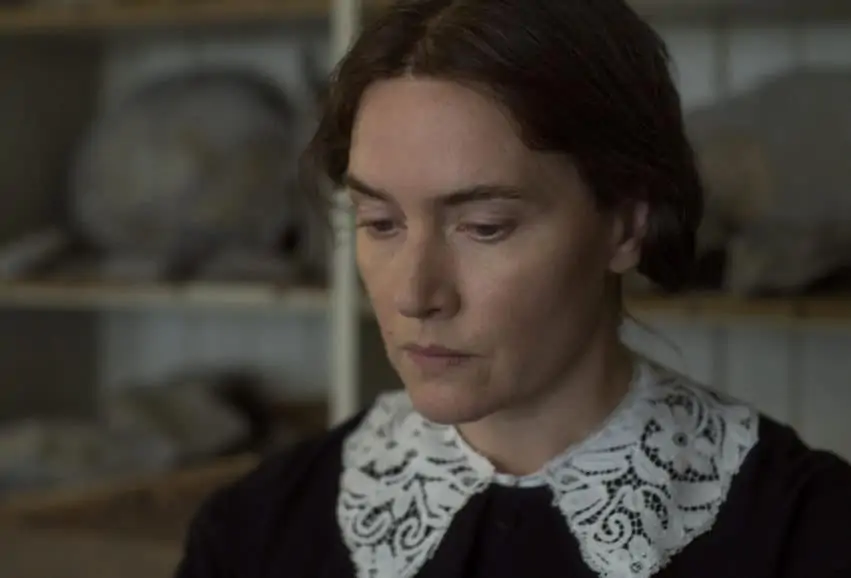
“We did some tests on the RED with Kate and Saoirse before shooting, lighting with just one candle and it was really stunning but at the same time I wanted a bit more than this,” he recalls. “I looked for the softest LED light source that I could find and basically used it to augment in a way that hopefully doesn’t look like it was lit by anything else than the candle.”
Fontaine further appreciated the ability to tweak the look in camera. “I am a big fan of FoolControl which is a fantastic [iOS] app developed for the RED to change colors, curves, and contrast. Another option is to use IPP2 to adjust the contrast or the highlight roll-off. It’s very handy and super quick, especially when you don’t have time to go to the DIT and tell them what kind of look you want. It’s something you can do on-the-fly on set literally 5 seconds before shooting.”
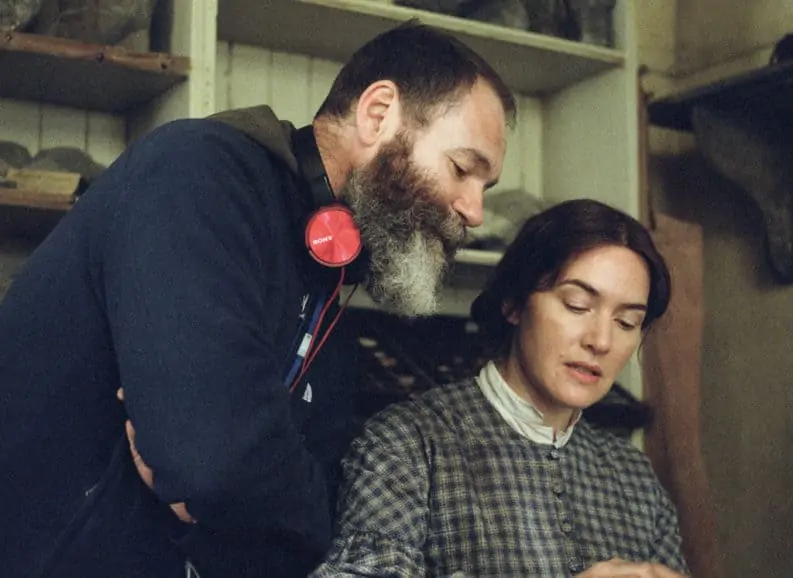
Fontaine says he deliberately didn’t watch period drama like The Favourite in prep, saying he didn’t want to be influenced by anything. “If the film you watch in prep is good, it is tempting to steal some ideas but that can mean you lose track of where you want to go for your own story. I believe that Francis and I managed to achieve a distinct look for Ammonite.”
BY ADRIAN PENNINGTON
Posted with permission from RED Digital Cinema – Behind the Look.

